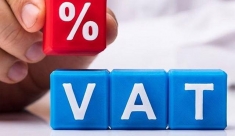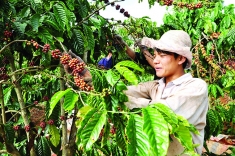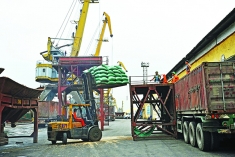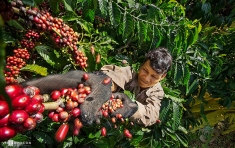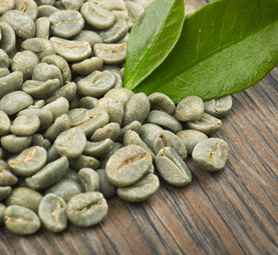
Administrator
Thank you to visit our website, for all the question please contact the administrator - General economic department.
Email: info@mascopex.com
Government agrees to VAT cut of 2% in 1H 2024
Tuesday, 02 January 2024 15:26Reductions to take effect from January 1 until June 30.
Value-added tax (VAT) rates on most goods and services will be cut by 2 per cent from January 1, under a new Decree from the government, the Government News has reported.
The 2 per cent reduction will be applicable to products and services subject to a 10 per cent rate, with exceptions for three groups of products and services, as follows.
Group 1: Telecommunications, financial activities, banking, securities, insurance, real estate business, metals and prefabricated products, mining products (excluding coal mining), coke coal, refined petroleum, and chemical products.
Group 2: Goods and services subject to special consumption taxes.
Group 3: Information technology under information technology laws.
The VAT reduction will be applied to all stages, including import, manufacturing, processing and trading.
The Decree will be in effect from January 1 to June 30, 2024.
Coffee exports to US rise in value
Monday, 19 September 2022 13:29In May and the first five months of 2022, Vietnamese coffee exports to the US decreased in volume but increased in value compared with the same time in 2021. The US is the fifth largest export market for Vietnamese coffee.
General Department of Vietnam Customs data show that in May 2022, Vietnam exported 9,340 tonnes of coffee worth US$22 million to the US, down 16.5 percent in volume but up 2.3 percent in value compared with May 2021. In the first five months, the export volume reached 50,580 tonnes, with the value reaching US$124.95 million, down 2.9 percent in volume but up 23.6 percent in value year-on-year.
The average price of Vietnamese coffee exports to the US in May 2022 was US$2,359 per tonne, down 5.9 percent compared with April but up 22.4 percent compared with May 2021. In the first five months, the average price was US$2,470 per tonne, up 27.2 percent year-on-year.
According to the Center for WTO and International Trade, in the first four months of 2022, the US imported 768,800 tonnes of coffee worth US$4.11 billion, up 10.8 percent in volume of 49.6 percent in value compared with the same period last year. The average import price was US$5,353 per tonne, up 35.1 percent. Notably, the average price of coffee imports from Vietnam increased 42.3 percent to US$3,451 per tonne.
While imports from Brazil decreased from 24.55 percent of the total US coffee imports in the first four months of 2021 to 21.94 percent in the first four months of 2022, Vietnamese coffee increased from 8.95 percent to 9.6 percent. In the 2020-2025 period, the US coffee market is forecast to grow an average 4.8 percent per year. Major factors boosting the market’s growth include the increasingly busy lifestyles and long working hours, which make coffee chains in the US more popular.
The US coffee market consists of the following segments: coffee beans, ground coffee, instant coffee, coffee capsules and coffee bags, distributed through points of sale at supermarkets, convenience stores, retailers and other distribution channels.
The US accepts only coffee products with origin traceability. Major standards required for coffee imports include Fairtrade USDA, Organic, Rainforest Alliance/UTZ Certified, Bird Friendly, Carbon Neutral, Organic, and Direct Trade.
According to the Foreign Trade Agency of the Ministry of Industry and Trade, the US is the fifth largest export market for Vietnamese coffee. Coffee is one of the most popular drinks in the US, ranking behind only carbonated beverages and bottled water in terms of sales volume in the non-alcoholic drink market.
Thanh Ha
Vietnamese farm products make EU market inroads
Monday, 19 September 2022 13:25(VEN) - Vietnamese agricultural products are opening doors in the European Union (EU) market amid post-pandemic recovery, bolstered by the EU-Vietnam Free Trade Agreement (EVFTA).
Seafood, rice top exports
Since the EVFTA took effect in August 2020, Vietnamese rice exports to the EU have soared. Pham Thai Binh, General Director of the Trung An Hi-tech Agriculture Joint Stock Company, said that in the first half of 2022, the company’s rice export turnover increased by 68 percent, with the EU its major market. In addition to rice, Trung An is also focusing on developing products made from rice that have been receiving positive EU market response, such as dry vermicelli and Vietnamese Pho soup.
Le Hang, Communications Director of the Vietnam Association of Seafood Exporters and Producers (VASEP), said that despite the COVID-19 pandemic, seafood export revenue in 2021 exceeded US$1 billion, up 12 percent compared to 2020, with the EU being a major importer.
As of the second quarter of 2022, the EU is one of Vietnam’s three largest seafood export markets. Along with seafood and rice, other export commodities to the EU have also recorded a stable growth rate.
According to the General Department of Vietnam Customs, since the agreement came into force two years ago, Vietnam’s export turnover to the EU has reached about US$83 billion, growing approximately 15 percent annually, mostly from products such as vegetables, rice, and seafood.
Brand name importance
Le Hang said the EU rules of origin are a major challenge for seafood exporters. Although VASEP and the Ministry of Industry and Trade (MoIT) have organized many programs to train businesses on certification of origin, different regulations and controls in each market might have led to misunderstandings about issuance of the certificates.
Pham Thai Binh added that the EU has huge potential, importing over two million tonnes of rice from Vietnam every year. However, the amount of Vietnamese goods exported to the EU in general remains very modest.
“I think the reason is still due to the commercial culture of Vietnamese businesses. The Trung An brand is not strong enough to carve out a niche for Vietnamese rice in the EU market. Therefore, we need a cooperation program and domestic businesses need to work together to create a Vietnamese rice brand for this market, and certify traceability and growing area codes that meet European standards to prevent goods being returned for violating them,” Pham Thai Binh said.
Tran Thanh Hai, Deputy Director General of the MoIT’s Agency of Foreign Trade, said that Vietnam exports most agricultural products to the EU in the form of raw materials or at very low preliminary stages of processing. Such products have no brand names because they do not reach end consumers. To reach the EU, products still have to go through several additional processing stages and carry the names of foreign distributors when entering their distribution channels. Therefore, in order to add more value, he urged Vietnamese businesses to focus on developing brands as a tool to help sell products and expand market share.
Lan Phuong
EU deal benefits Vietnamese exports
Monday, 19 September 2022 13:16(VEN) - “Vietnamese companies are making rather good use of tariff cuts under the EU-Vietnam Free Trade Agreement (EVFTA),” affirmed Tran Thanh Hai, Deputy Director of the Agency of Foreign Trade under the Ministry of Industry and Trade in a talk with Vietnam Economic News’ Quynh Nga.
Which sectors have taken advantage of tariff cuts under the EVFTA during the last two years?
Overall, most export sectors have made rather good use of tariff cuts under the trade deal. From August 1, 2020 to June 30, 2022, according to data from the General Department of Vietnam Customs, Vietnam’s export value to the EU reached US$79.6 billion, a year-on-year increase of 14.3 percent.
The export value averaged about US$3.5 billion per month. The export of most key products remained on the rise. Topping the export growth list were iron and steel (up 255.5 percent); cameras, film cameras and components (up 138 percent); base metal (up 77.3 percent); coffee (up 75.2 percent); pepper (up 55.8 percent); fibers and yarns (55.3 percent).
In the first two quarters of 2022, EUR.1 certificates of origin were used for export of products such as rice, footwear, electrical wires and cables, fibers and yarns, confectionery and cereal products, and seafood.
How did Vietnamese companies meet the EU’s very strict requirements for imported goods during the last two years?
Vietnamese companies have adapted themselves to commitments in the EVFTA and become flexible in using certificates of origin to benefit from the trade deal.
They are enhancing their competitiveness by creating high-quality products meeting strict requirements of the EU market, especially for farm produce and seafood.
In the first two quarters of 2022, Vietnam exported US$652 million worth of seafood to the EU, up 42.1 percent year on year; fruit and vegetable exports reached US$82 million, up 12.2 percent; rice exports reached US$9 million, up 5.4 percent. EUR.1 certificates of origin were used for 80.9 percent of seafood exports; 67.6 percent of fruit and vegetable exports; and 100 percent of rice exports.
What challenges face Vietnamese exports to EU member countries?
Meeting the EU’s rules of origin and strict technical standards is a great challenge for businesses seeking access to this discerning market.
The EVFTA has new, different rules of origin compared with other free trade agreements (FTAs) that involve Vietnam. Therefore, it’s difficult for Vietnamese companies, especially those still inexperienced in exporting to the EU, to understand the rules.
For example, flexible quotas for textiles and garments are annotated at Product Specific Rules (PSR) that appear at the bottom of the agreement page, and these quotas are applied to only product lines mentioned in the annotation but not all textile and garment products and materials as other FTAs.
Therefore, Vietnamese companies should thoroughly understand the EVFTA’s rules of origin. To do this, they should send their technical staff to training courses on the trade deal’s rules of origin and other requirements organized by the Ministry of Industry and Trade.
For its part, the ministry will continue disseminating information about free trade agreements, especially new-generation ones and those in the initial period of implementation, such as the Comprehensive and Progressive Agreement for Trans-Pacific Partnership, the EVFTA, the UK-Vietnam Free Trade Agreement, and the Regional Comprehensive Economic Partnership. The ministry will also coordinate with relevant units to organize workshops, seminars and specialized training courses on market opening opportunities and rules of origin in FTAs.
Further, the ministry will continue facilitating administrative procedures related to imports and exports, especially the granting of certificates of origin under FTAs.
VIDEO CLIP

" MASCOPEX Joint Stock Company has been striving to become the Top Prestige –Trust – Quality in the fields of import & export Agricultural Product. "


